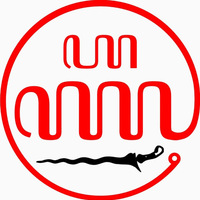
Arend Hattingh
Related Authors
Lawrence Francis Ligocki
North Central University
Noam Mizrahi
The Hebrew University of Jerusalem
Kristine Garroway
Hebrew Union College - Jewish Institute of Religion
Wojciech Kosek
Pontifical University of John Paul II
Naoya Katsumata
Kyoto University
Frank H. Polak
Tel Aviv University
InterestsView All (28)







Uploads
Papers by Arend Hattingh
practiced by Ancient Israelites within the YHWH cult. The discussion starts with the firstborn offering commanded in Exodus and then moves to Leviticus 1-7 which is a
blueprint for the ritual offerings within the YHWH cult. The question is why the commanded firstborn offerings are left out of Leviticus 1-7. The study proposes that the firstborn offerings’ association with child sacrifice might have the reason for why
it was left out. The dissertation then moves from P to H material in Leviticus and it is noted that Leviticus 18 and 20 ascribe human sacrifice to the Molech cult. A discussion on who or what Molech was, is presented before exegesis is done of the two texts referring to Molech. It seems clear that human sacrifice is projected onto the Molech cult. Finally the return of the firstborn offering in Leviticus 27 along with explicit reference to human sacrifice is discussed. The dissertation shows that the importance of chapter 27 has often been neglected by Old Testament scholars. In conclusion the study shows that there is a fairly obvious tension between texts
admonished or denying the practice of human sacrifice and texts allowing it.
practiced by Ancient Israelites within the YHWH cult. The discussion starts with the firstborn offering commanded in Exodus and then moves to Leviticus 1-7 which is a
blueprint for the ritual offerings within the YHWH cult. The question is why the commanded firstborn offerings are left out of Leviticus 1-7. The study proposes that the firstborn offerings’ association with child sacrifice might have the reason for why
it was left out. The dissertation then moves from P to H material in Leviticus and it is noted that Leviticus 18 and 20 ascribe human sacrifice to the Molech cult. A discussion on who or what Molech was, is presented before exegesis is done of the two texts referring to Molech. It seems clear that human sacrifice is projected onto the Molech cult. Finally the return of the firstborn offering in Leviticus 27 along with explicit reference to human sacrifice is discussed. The dissertation shows that the importance of chapter 27 has often been neglected by Old Testament scholars. In conclusion the study shows that there is a fairly obvious tension between texts
admonished or denying the practice of human sacrifice and texts allowing it.